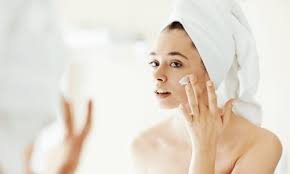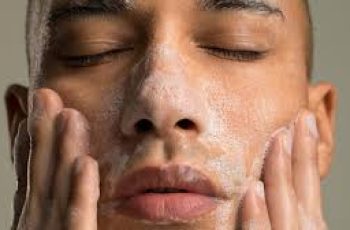
Phenoxyethanol in Skin Care
Phenoxyethanol is a commonly used but controversial preservative found in numerous skincare products, from moisturizers to serums. As we have become increasingly aware of the safety and risks of ingredients in our skincare routines, it’s good to understand the role of phenoxyethanol, its potential benefits, and the risks associated with its use. I will discuss why it is still used even though it has made it on toxic chemical lists and excluded on clean beauty lists.
Find out if products with this ingredient are still right for your skin type by taking our free quiz here:
What is Phenoxyethanol?
Phenoxyethanol is an organic compound derived from phenol and ethylene oxide. It is a colorless, oily liquid with a faint rose-like scent. In skincare products, phenoxyethanol acts as a preservative, preventing the growth of bacteria, yeast, and mold, which can cause products to spoil and potentially harm the skin. It is also used as a fragrance ingredient, which may not always be listed on product labels.
Here are some great products that happen to have phenoxyethanol:
Other names for Phenoxyethanol
Phenoxyethanol is the INCI name of the cosmetic label. However, it may also be called one of these names:
2-phenoxyethanol
ethylene glycol monophenyl ether
phenoxytol
1-hydroxy-2-phenoxyethane
(2-hydroxyethoxy) benzene.
Safety of Phenoxyethanol
The EWG gives phenoxyethanol a 2-4 safety rating. They state that use around the mouth or lips is less safe due to inhalation risks. Phenoxyethanol often is included in the toxic skincare ingredient lists. Why is there fear that it is unsafe?
These are the potential risks:
Potential irritant: While phenoxyethanol is considered less irritating than some other preservatives, it can still cause skin irritation, particularly for those with sensitive.
It is an allergen. Allergic reactions are not common but have been reported.
There is a lack of comprehensive, long-term studies on the safety of phenoxyethanol in skincare products, leading some consumers to be cautious about its use. Right now, its use is limited to 1% or less in cosmetics.
How much is safe?
The European Union Cosmetics Regulation (EC) n. 1223/2009 allows phenoxyethanol to be used as a preservative in cosmetics at a concentration of up to 1%. The FDA, Cosmetic Ingredient Review (CIR), and the European Commission on Health and Food Safety also consider phenoxyethanol safe when used in cosmetics at a concentration of 1% or less.
This level in leave on products like moisturizers, serums and sunscreens is considered safe. Higher concentrations may increase the risk of skin irritation.
Safety in Pregnancy
There is limited data on the safety of phenoxyethanol during pregnancy. While some glycol ethers like ethylene glycol ethyl ether have shown toxic effects on reproduction and are banned in Europe, phenoxyethanol has different chemical properties and has not been classified as a reproductive toxicant.
To be extra safe- do not use in lip products, around the mouth or on large areas of the body.
Safety in Baby Products
While phenoxyethanol is generally considered safe for use in cosmetics at concentrations up to 1%, concerns have been raised about its use in baby products. In 2012, the French National Agency for the Safety of Medicines and Health Products (ANSM) advised against using phenoxyethanol in cosmetics for children under 3 years old, particularly in products applied to the diaper area. This recommendation was based on the potential for systemic absorption and the higher sensitivity of infants to potential adverse effects. Given the developing nature of infant skin and the larger ratio of skin surface area to body mass, the potential for increased absorption, a cautious approach is warranted when using products containing phenoxyethanol on babies.
Benefits of Phenoxyethanol:
Phenoxyethanol is a popular preservative for several reasons:
Effective preservative: Phenoxyethanol is an effective preservative that helps extend the shelf life of skincare products and maintain their quality.
Less irritating than other preservatives: Compared to some other preservatives, such as parabens and formaldehyde-releasing agents, phenoxyethanol is generally considered less irritating to the skin.
Broad-spectrum antimicrobial properties: Phenoxyethanol can protect against a wide range of microorganisms, ensuring the product remains safe for use.
Antimicrobial benefits
Phenoxyethanol has broad coverage and inhibits the growth of:
Yeast such as Candida albicans
Gram-negative bacteria such as Pseudomonas aeruginosa
Gram-positive bacteria such as Staphylococcus aureus
Controversy
There has been some controversy surrounding the use of phenoxyethanol in recent years. Some concerns have been raised about its potential health risks, particularly when used in products designed for infants and young children. These concerns stem from phenoxyethanol’s chemical similarity to other glycol ethers, some of which have been shown to have toxic effects on reproduction and have been banned in Europe.
Additionally, there have been controversial claims that phenoxyethanol may have negative effects on the blood, liver, and endocrine system, although these claims are not universally accepted by the scientific community. As a result, some consumers and advocacy groups have called for greater regulation and transparency regarding the use of phenoxyethanol in skincare and cosmetic products.
The expert in the field of skin care product safety have deemed phenoxyethanol safe in concentrations lower than 1%. All of the reputable medical grade brands like Skinceuticals and Skin Medica have concentrations lower than1%- at least this is what they have told me verbally but not in writing.
Estrogenic Effects
Some chemicals called glycol ethers, like ethylene glycol ethyl ether or ethylene glycol methyl ether, have been found to cause problems with reproduction and have been banned in Europe. However, phenoxyethanol is a different kind of chemical than these harmful glycol ethers. It doesn’t evaporate easily and hasn’t been classified as a substance that causes reproductive issues in Europe, unlike some other glycol ethers.
Still, some people are concerned about the safety of phenoxyethanol because it’s in the same chemical family as glycol ethers. There have also been controversial claims that phenoxyethanol affects the blood, liver, and hormones, which have been talked about in public and in the media.
In June 2015, the U.S. Environmental Protection Agency (US-EPA) did a screening and found that phenoxyethanol did not have any estrogen-like activity.
Why is it Used When It is Controversial?
Phenoxyethanol is considered to have a lower risk of causing contact dermatitis compared to many other preservatives commonly used in skincare and cosmetic products. While allergic reactions to phenoxyethanol have been reported, they are relatively rare. In fact, phenoxyethanol is often used as an alternative to preservatives that have a higher potential for causing skin irritation and allergic reactions, such as parabens and formaldehyde-releasing preservatives.
One of the reasons phenoxyethanol is still widely used in the cosmetic industry is that it has a favorable safety profile compared to other preservatives. It is effective at low concentrations (typically used at 1% or less) and has a broad spectrum of antimicrobial activity, which means it can protect against a wide range of bacteria, yeast, and mold.
In contrast, some other preservatives have more significant downsides. For example, some parabens have been associated with endocrine disruption concerns, and formaldehyde-releasing preservatives can cause more frequent and severe cases of contact dermatitis. Additionally, some natural preservatives, such as essential oils, can be highly irritating to the skin and may cause allergic reactions in sensitive individuals.
While no preservative is entirely free from the risk of causing skin reactions in some people, phenoxyethanol is generally considered to be a safer option compared to many other preservatives. Its lower risk of causing contact dermatitis and other skin irritations, combined with its effectiveness at low concentrations, has contributed to its continued use in the skincare and cosmetic industry.
Conclusion
As a dermatologist, I believe that preservatives are necessary in skincare products to prevent the growth of harmful yeast and bacteria that could spoil the product and potentially harm our skin. However, many preservatives come with their own risks, such as hormonal effects, allergic reactions, or negative impacts on the environment.
While we don’t have long-term safety studies on phenoxyethanol, it is generally considered a safer alternative to many other preservatives. It’s important to note that most experts agree we should avoid using products containing phenoxyethanol on babies and on large areas of the body during pregnancy, just to be cautious.
In my opinion, phenoxyethanol, when used in the appropriate concentrations, is a much better choice compared to preservatives that can disrupt hormones, cause severe allergies, or damage the environment. Until we have more conclusive long-term safety data, phenoxyethanol remains one of the safer options available to keep our skincare products free from harmful microorganisms.
This is my opinion and I will be monitoring the data and will update this blog if any scientific studies change my opinion.
Looking for the best safe skincare for your skin type- I can help! Take the quiz or talk with our Skincare Concierge AI Bot.


